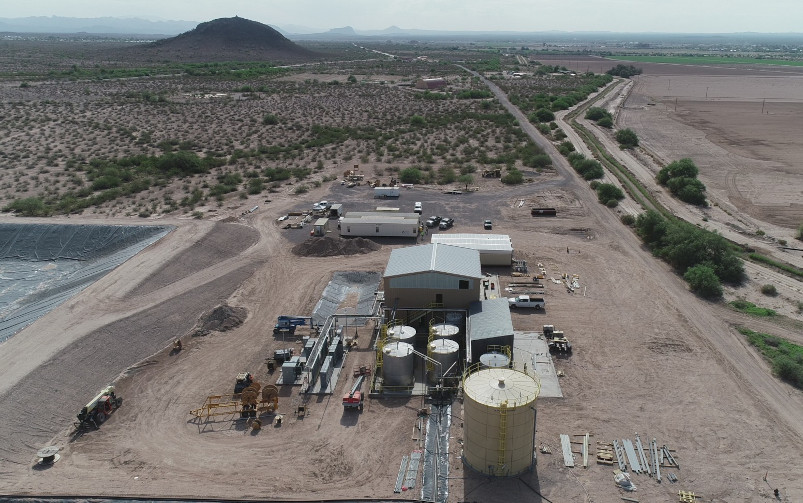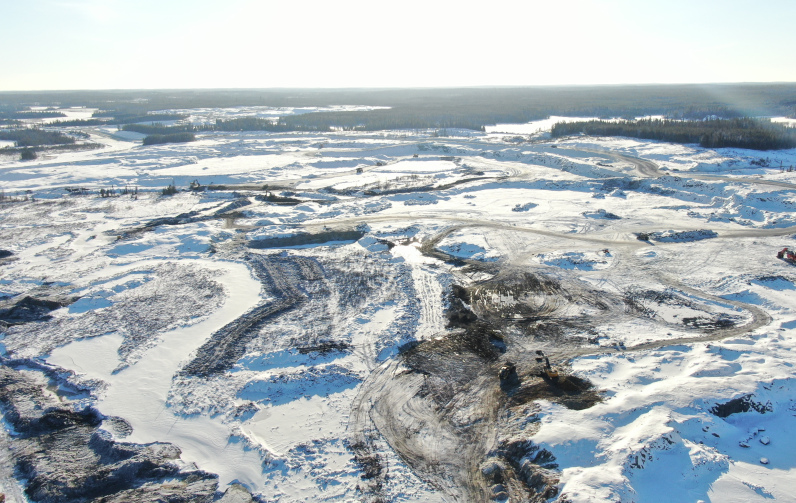Marathon Gold's Valentine gold project, expected to be the largest gold mine in Newfoundland, is moving forward with new permits. Courtesy of Marathon Gold.
Welcome back to your weekly mining news recap, where we catch you up on some of the news you may have missed. This week’s headlines include the federal government’s planned emissions cap for the oil and gas sector, commodity price concerns and addressing mining-induced stress in deep underground operations.
CIM Magazine revealed its 2022 Names to Know, highlighting industry movers and shakers for their important work and dedication. Featuring top-level executives, Indigenous reconciliation leaders and technology trailblazers, the 10 people profiled are emblematic of the vision and energy that is driving the industry forward these days.
The federal government plans to implement an industry-specific emissions ceiling for the oil and gas sector, aiming to drive emissions down by almost 40 per cent from 2005 levels by 2030, as reported by CBC News. The sector is responsible for over a quarter of Canada’s carbon emissions. While the specific cap has yet to be disclosed, background documents and government sources suggest it may be set in the ballpark of 110 million tonnes, a 46 per cent reduction from 2019 levels.
Suncor reached a deal with activist investor Elliott Investment Management LP, agreeing to undertake a strategic review of its downstream retail business while also accepting the appointment of three new independent directors to its board, as reported by CBC News. The news comes on the heels of the company’s CEO resigning last week following a poor safety track record recently, which included an on-site death. The new additions to the Suncor board are former BHP Billiton executive Ian Ashby, former Talisman Energy executive Jackie Sheppard and former Devon Canada president Chris Seasons.
Major miners BHP and Rio Tinto are flagging upcoming commodity price upsets as the cost of production swells and demand stalls, forecasting a slowing down of global growth, as reported by Bloomberg News. BHP is predicting cost pressures to last for a year at least, and Vale has already cut its iron ore production guidance to adjust to new market conditions. Iron’s price dipped below US$100 per ton last week after Chinese demand slumped further.
With mines expected to go deeper than ever in the coming years, the effect of overburden stress on mine design performance is not an issue that can be cast aside. Latham Hamlin, a Master’s student at the University of Saskatchewan, offered insights into his research on mining-induced stress in a potash mine in a Q&A with CIM Magazine. From the issue of quantifying stress with minimal error to optimizing mine design for new conditions, Hamlin’s methodology is relevant well beyond the Rocanville, Saskatchewan, potash mine he studies.
Canada Nickel Company has received conclusive results backing up its accelerated carbon capture claims for its Crawford project in Timmins, Ontario, where it has been testing the In Process Tailings Carbonation process, as reported by Northern Ontario Business. The lab-scale test results indicate that the process could allow Crawford’s tailings to absorb enough CO2 to achieve net-zero emissions within 36 hours and generate 21 tonnes of carbon credits per tonne of nickel produced within six days, making the process eight to 12 times faster than current methods.
PolyMet Mining Corp and Teck Resources are joining forces through NewRange Copper Nickel LLC, a joint venture aiming to develop their copper and nickel mining projects in Minnesota, as reported by Reuters. The new company will share costs to develop the two proposed mines and will marry Teck’s technical experience and PolyMet’s U.S. mine permitting experience.
BHP has brought forward the date for starting production at the Jansen potash mine in Saskatchewan by one year, expecting operations to kick off in 2026 as opposed to 2027, as reported by the Toronto Star. An operational review released this week confirms the project’s progress, and the company is also considering accelerating the project’s second stage. Jansen is expected to produce around 4.35 million tonnes of potash per annum once it reaches production.
New permits and stakeholder agreements have allowed Marathon Gold to confirm its Valentine project in central Newfoundland – which is expected to be the largest gold mine in the province – will be moving forward, as reported by Mining.com. A 20-year mining lease for two deposits, an approved 40-kilometre-long power line and a benefits agreement concluded with the province are some of the latest developments for the project, which is still undergoing its federal environmental assessment.
The world’s first tech exhibition to be set in an underground operating mine is being planned by NORCAT in Sudbury, Ontario, where buyers and investors will be invited below ground to see mining equipment put to use before their eyes, as reported by Northern Ontario Business. The event, dubbed Mining Transformed, is planned to take place September 26-29 in NORCAT’s own Underground Centre and will accommodate 150 visitors.
That’s all for this week. If you’ve got feedback, you can always reach us at editor@cim.org. If you’ve got something to add, why not join the conversation on our Facebook, Twitter, LinkedIn or Instagram pages?




